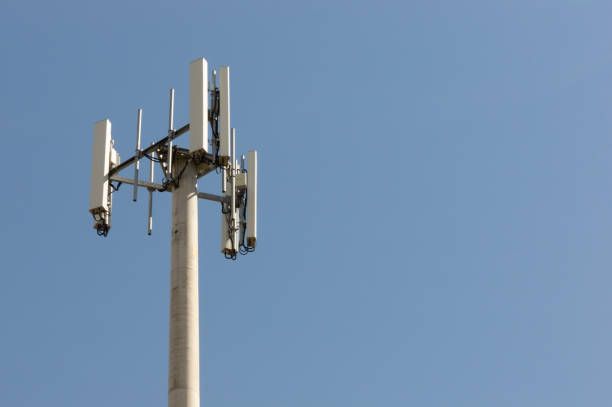
Send Inquiry
Exploring the Concept of Monopole Antennas
Historical Background: Guglielmo Marconi's Discovery
The concept of monopole antennas traces back to the pioneering work of Guglielmo Marconi, a renowned radio expert who first demonstrated their functionality in the late 19th century. Marconi's experiments led to the patenting of the monopole antenna in 1896, marking a significant milestone in the history of radio communication.
Types of Monopole Antennas
Helical Antenna
Helical antennas are characterized by one or more conducting wires wound in a helix pattern. These antennas, known for their compact size and directional radiation pattern, find applications in various fields such as satellite communication, GPS systems, and amateur radio.
Inverted-F Antenna
The inverted-F antenna, commonly used in UHF and microwave frequencies, features a monopole element grounded at one end and parallel to a ground plane. Its design allows for efficient wireless communication, making it a preferred choice in military and civilian applications alike.
Whip Antenna
Whip antennas, recognized for their flexibility and durability, consist of a straight flexible wire attached to radio transmitters or receivers. They are extensively employed in devices like walkie-talkies, Wi-Fi routers, and FM radios, offering reliable performance across different frequency bands.
Random Wire Antenna
Random wire antennas, comprising a long wire suspended above the ground, provide versatility in communication across shortwave, medium wave, and long wave bands. Their simplicity and effectiveness make them suitable for temporary transmitting stations and indoor installations.
Mast Radiator
Mast radiators, resembling radio masts or towers, serve as monopole antennas primarily utilized in low-frequency bands for AM radio broadcasting. These antennas, mounted on non-conductive supports, play a crucial role in delivering broadcast content over long distances with minimal signal degradation.
Additional Types of Monopole Antennas
T-Antenna
T-antennas are characterized by multiple horizontal wires balanced between two radio masts. Their configuration and deployment enable effective communication across low frequency (LF), medium frequency (MF), very low frequency (VLF), and shortwave bands. They are commonly utilized in both amateur radio stations and AM broadcasting setups.
Folded Unipole Antenna
Folded unipole antennas feature a vertical metal rod or mast connected to a grounding system, often consisting of buried wires. Their unique structure and function make them particularly effective for AM radio transmission, providing reliable signal propagation over long distances with minimal interference.
Umbrella Antenna
Umbrella antennas are wire monopole antennas widely employed as transmitting antennas in various frequency bands, including LF, MF, and VLF bands. Their design features radial wires sloping down from the pinnacle of the antenna, resembling an umbrella, and are attached to supporting ropes via insulators. These antennas offer efficient signal transmission and are commonly used in communication systems requiring omnidirectional coverage.
Rubber Ducky Antenna
Rubber ducky antennas, also known as short antennas or base-loaded whip antennas, consist of a narrow helix-shaped wire enclosed within a rubber jacket. They are extensively used in handheld radio equipment operating at UHF and VHF frequencies, providing compact yet efficient signal reception and transmission. These antennas are popular choices for applications such as two-way radios, walkie-talkies, and portable communication devices.
Benefits of Monopole Antennas
Ease of Installation and Cost-effectiveness
Monopole antennas are renowned for their simplicity in installation, making them an attractive option for various communication setups. Their straightforward design and minimal requirements translate to cost-effective solutions for both commercial and amateur applications.
Efficiency in Communication
Monopole antennas offer efficient signal transmission and reception capabilities, ensuring reliable communication across different frequency bands. Their effectiveness in delivering clear and stable signals makes them indispensable in diverse industries, including telecommunications, broadcasting, and aerospace.
Omnidirectional Radiation Pattern
One of the key advantages of monopole antennas is their omnidirectional radiation pattern, which allows for signal propagation in all directions perpendicular to the antenna's axis. This feature enables widespread coverage without the need for complex antenna orientation, making monopole antennas ideal for applications requiring broad signal distribution.
Versatility and Adaptability in Various Fields
Monopole antennas demonstrate remarkable versatility and adaptability, catering to a wide range of communication needs across various fields. Whether deployed in urban environments, rural areas, or specialized settings such as military installations, monopole antennas excel in providing reliable connectivity in diverse scenarios.
How Monopole Antennas Work
Principles of Operation
Monopole antennas operate on the principle of radiation from a single conductor, typically a vertical rod or wire, mounted over a conducting ground plane. When an electrical current is applied to the antenna, electromagnetic waves are radiated vertically, propagating outward in all directions perpendicular to the antenna's axis.
Radiation Pattern and Signal Propagation
The radiation pattern of a monopole antenna determines the distribution of electromagnetic energy in space. With their omnidirectional radiation pattern, monopole antennas emit signals evenly in all directions, facilitating widespread coverage and seamless communication. Signal propagation occurs through the transmission of electromagnetic waves, which travel through the surrounding medium, such as air or space, to reach the intended receiver.
Factors Affecting Performance
Several factors influence the performance of monopole antennas, including antenna height, ground plane quality, and surrounding obstacles. Optimizing these parameters ensures optimal signal transmission and reception, maximizing the effectiveness of monopole antennas in various communication scenarios.
Conclusion
With their ease of installation, cost-effectiveness, and versatility, monopole antennas emerge as indispensable tools across various industries and fields. Whether you're setting up a radio station, enhancing wireless connectivity in urban areas, or deploying communication systems in remote locations, monopole antennas offer a solution that combines performance and practicality.
Therefore, I highly recommend considering Ruixue's range of antennas for your communication needs. With their commitment to quality and innovation, Ruixue antennas deliver exceptional performance and reliability. Whether you're a telecommunications professional, an amateur radio enthusiast, or a business looking to improve connectivity, Ruixue antennas provide a solution that meets your requirements and exceeds your expectations.
Invest in Ruixue today and experience the difference in your communication endeavors.


